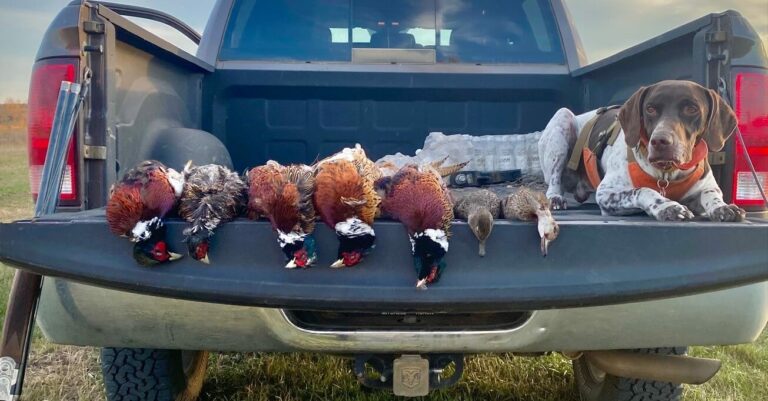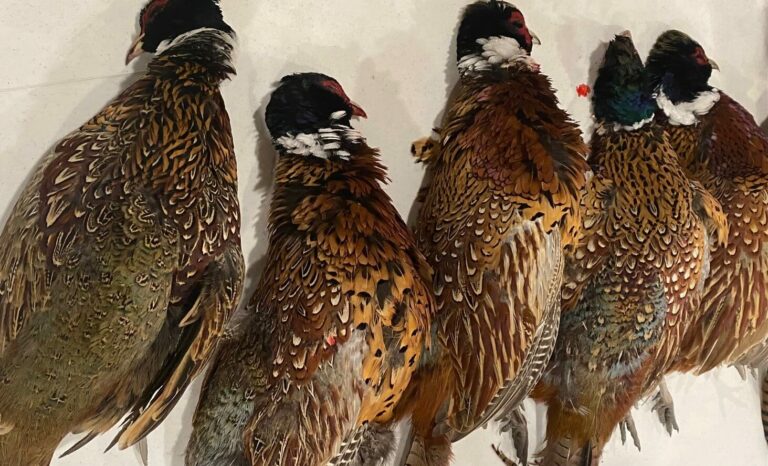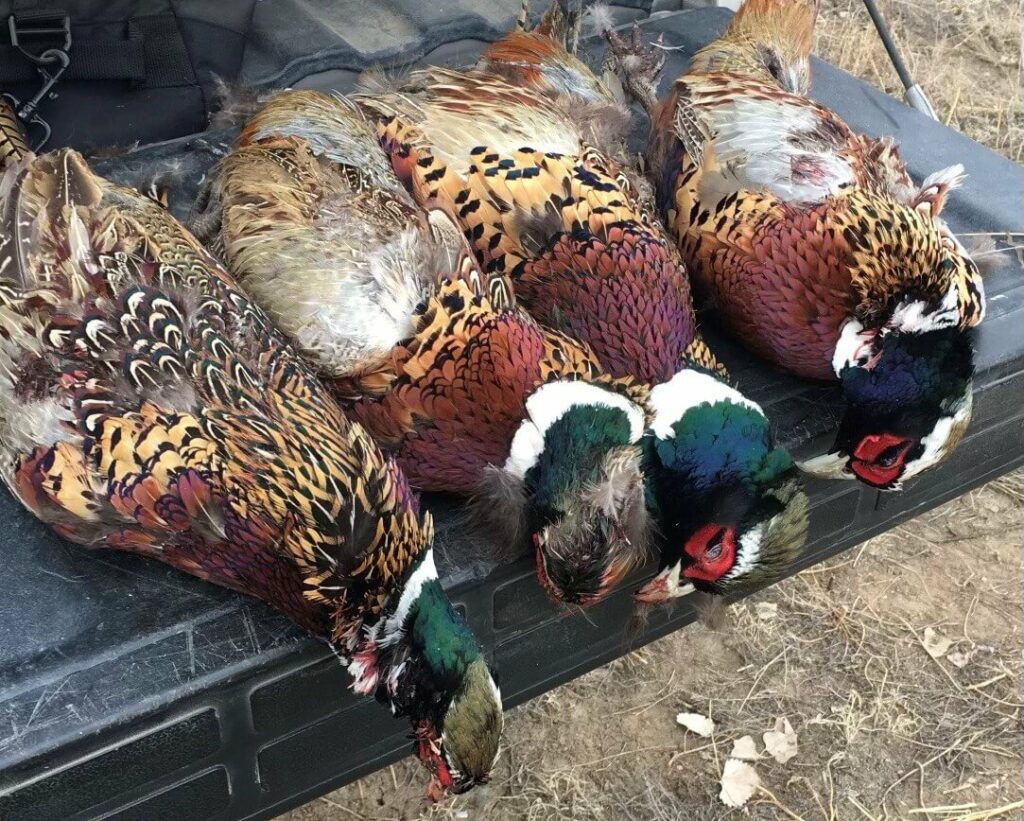Introduction
For many hunters across the lower 48, the fall hunting season is what everyone seems to be waiting for. You have a diverse range of options when it comes to what you are able to hunt, ranging from deer, doves, ducks and more. One of the most beloved upland bird species people love to hunt for is pheasant. Over the past decade or two it seems that many hunters are noticing a lack of birds in areas where they were once prominent. There are many variables to this, but I will list three reasons why pheasant populations are declining in recent years below.
I feel a bit of sorrow whenever I hear older hunters reflect on the days of old (the 1970’s-1990’s). The days where it was common to see a line of headlights come opening day for upland bird season and everyone seemed to get their limit. Days of abundance never seemed to be so sweet; no one ever really seemed to think that the endless amount of birds would ever end. We all know the saying, “what goes up must come down”, population ecology is no different.
Ring-necked pheasants (Phasianus colchicus) were introduced into the United States in 1881, they are not a native species, but were originally brought in from central and eastern Asia, as well as other neighboring countries/regions. They were introduced to the United States for the sole purpose of hunting, which was not uncommon in the late 1800’s and early 1930’s. Though the birds aren’t native, they still reside within habitat/niche similar to that of native upland bird species like the prairie chicken species, quail, and Northern bobwhite
For those who have studied a bit of biology/ecology (like myself), we know that there are many variables that go into the ecology of an area. Everyone knows about the idea of a “food web” and that everything is connected, even though I think many don’t really understand that we are connected too. Every hunter knows that having food in one spot isn’t enough to keep an animal in a location for a long period of time without the presence of other important variables such as habitat and water, much like humans.
One of the biggest things that has happened in the last 50-60 years is the increase in human population across the globe and within the United States. This increase in human population has led to a greater change in land use/urbanization. We as a species have had to expand the scale at which we farm and the way/rate at which we produce products to maintain the modern lifestyle(s) we have grown accustom to. Many are unaware of these changes as they paint a slow, gradual death. A death that is almost symbolic or foreshadowing of things to come in the near future if we don’t reflect on our actions and make a change.
I don’t want this to be some click-bait doom and gloom blog post to scare you or to have you feel helpless as this isn’t the case. I hope to inform you on some of the issues plaguing the pheasant/upland bird population in regards to farming/land use, climate change, and unstable ecosystems (high predator populations). I will also add some additional tips on what you can do to make a difference from a land stewardship perspective (if you own land) as well as what you can do via a donation or volunteer effort.
1. Impacts of Farming
As many today know, farming plays a key role in either creating or removing various types of food sources and cover/habitat. Farming has gotten a lot more intensive in the last few decades due to changes in competition and demand from the market. I read a news article from a local city news site in regards to the subject and learned a lot. The article is titled, Where Have all the Pheasants Gone, by Vance Ehmke. The article was written in 2020 and interviews various prominent figures across various state agencies that work in relation to conservation efforts for pheasants/upland birds with the state.
Within the article there was a quote from Randy Rogers who is affiliated with Kansas Department of Wildlife and Parks (KDWP), which highlights some of the changes in agricultural practices and its impact on bird populations when it states, “we started using more herbicides, we intensified crop rotations and we adopted use of higher yielding shorter wheat varieties… pheasants had been able to nest successfully in green wheat in the spring.
Then broadleaf weed growth in the post-harvest wheat stubble provided pheasant chicks with an abundant supply of insects that are essential for the first two months of life. The weed canopy also provided protection from the elements and from predators. That protection carried them well into the next spring when they’d move back into the new wheat on nearby fields and start the cycle all over again”. This shift in agriculture practices, paired with a continuation of habitat/food loss is a driving factor in the decline in bird numbers we see today.
This observation isn’t just noted in Kansas, but all across the United States. There is some correlation to bird density based on land management practices such as if crops were harvested prior to season, types of crop planted, as well as application of pesticides/herbicides.

Photo credits to my co-author Daniel
2. Impacts of Climate Change
As most of us are aware, climate change currently impacts our lives every day. Climate change is a cyclical and natural occurring phenomenon, though this time it is occurring at an accelerated rate due to human activity in regards to the use of fossil fuel based products for manufacturing, transportation, and more.
Climate change is predicted to alter global temperature averages by 1.5-2 degrees Celsius (2.7-3.6 degrees Fahrenheit). This seems small, but it could have big implications on various ecosystems, native habit ranges, as well as the extremity of weather patterns. There is a high possibility that we will see more examples of extreme drought or floods as well as tornados, hurricanes, and more.
I am not saying this as to scare people, but just reminding them that though climate change is a relatively slow process, even when being accelerated by our species, there are things to consider in regards to how we prepare for certain events and change the way we manage the land in preparation for such harsh environments as to ensure that future generations have access to great natural resources.
3. Impacts of Predator Populations
It seems that instead of blaming the two biggest contributors to pheasant population decline (already previously mentioned) a lot of people want to blame other species for the consequence of our blunders within the few decades. It is common to hear people say things on the line of “those hawks are decimating x population” or “them damn raccoons and coyote need to be trapped to save our bird populations”. This is only partially true though.
The major issue for pheasant and other birds is mainly habitat loss via the form of land use change and farming practices. We are seeing an unprecedented amount of raccoons and other predators that now thrive with the new habitat change and are contributing to the damage done by broken and mismanaged ecosystems.
This idea is briefly discussed within a scientific article looking into how long term changes in agricultural practices influences pheasant population titled, Long-term and widespread changes in agricultural practices influence ring-necked pheasant abundance in California, by Brianne Brussee, et al.
4. What You Can do to Help

Photo credits to my co-author Daniel
After listing the top contributing factors to why the populations of pheasants and other native bird species are declining, it may feel like the solution is out of your hands and if you don’t own land, there is nothing you can do. This is far from the case and I will tell you why.
Sure, this issue is being perpetuated by large scale agriculture practices, but it can also be cured by a change or two, even if small. If you own land or have family that own land you should consider sending them this blog post or and tell them to have an open mind and have a civil discussion about the topic. You can try to restore your own native prairie grass/habitat or pay someone to do it for you. It seems that these birds just need some cover to catch a break from animals trying to eat them and they can’t do that when corn and wheat are harvested to the dirt before the middle of fall.
Beyond keeping cover and leaving some food for the other animals, consider avoiding the use of herbicides on your property. Even though some weeds can draw nitrogen and other precious nutrients away from crops it is important to understand that not every plant needs to have a monetary value to be considered valuable. It is hard for a lot of farmers to grasp this in a capitalistic society, but it is the first step in becoming a conservationist.
For my friends who don’t own land or have any connection to some you can still help. You can help with your time or money. Pheasants Forever is a non-profit conservation organization that is focused on maintaining and creating pheasant habitat to increase populations and hunting access. I myself have tried to apply to work for this organization, but come up short in the applicant pool sadly. Regardless, the organization would gladly appreciate any donations or volunteer hours you are willing to give towards the cause.
You can also look into your local state fish and game agencies and see if they have any volunteer work related to the issue as they are usually well aware of the issue(s) and coordinate with federal and other non-profit organizations to work on various conservation projects.
Conclusion
Pheasant hunting is a recreation loved by many across the United States. Many hunters travel many miles to be able to hunt pheasants in great habitats, where they are abundant. I plan to get my act together in the coming year or two and get serious about understanding these birds and travel to different states to compare habitat.
I hope I have emphasized the importance of habitat and good land management, especially in response to what may be to come in the near future. Given this information it should help a lot of hunters struggling to find birds have some more insight on what habitats they should be considering and which they should keep on driving past.
Pheasants, though not native to the United States to me represent more than just a bird brought into hunt, they really indicate that our native bird populations are struggling and it is not a coincidence that this is happening, nor is it due any other species besides ours. In order to receive the gifts from these animals and the land we must be willing to give back without expectation that we will see an immediate or exponential return. Life, water, land, and the air are all sacred. We must continue raising concern of these issues and fighting for what we know is true.
Works Cited
Coates, PS, Brussee, BE, Howe, KB, Fleskes, JP, Dwight, IA, Connelly, DP, Meshriy, MG and Gardner, SC. Long-term and widespread changes in agricultural practices influence ring-necked pheasant abundance in California. Ecology and Evolution. 2017; 7: 2546–2559. doi: 10.1002/ece3.2675
Ehmke, Vance. “Where Have All the Pheasants Gone?” The Hutchinson News, The Hutchinson News, 15 Mar. 2020, www.hutchnews.com/story/news/local/kansas-agland/2020/03/15/where-have-all-pheasants-gone/1521825007/.
